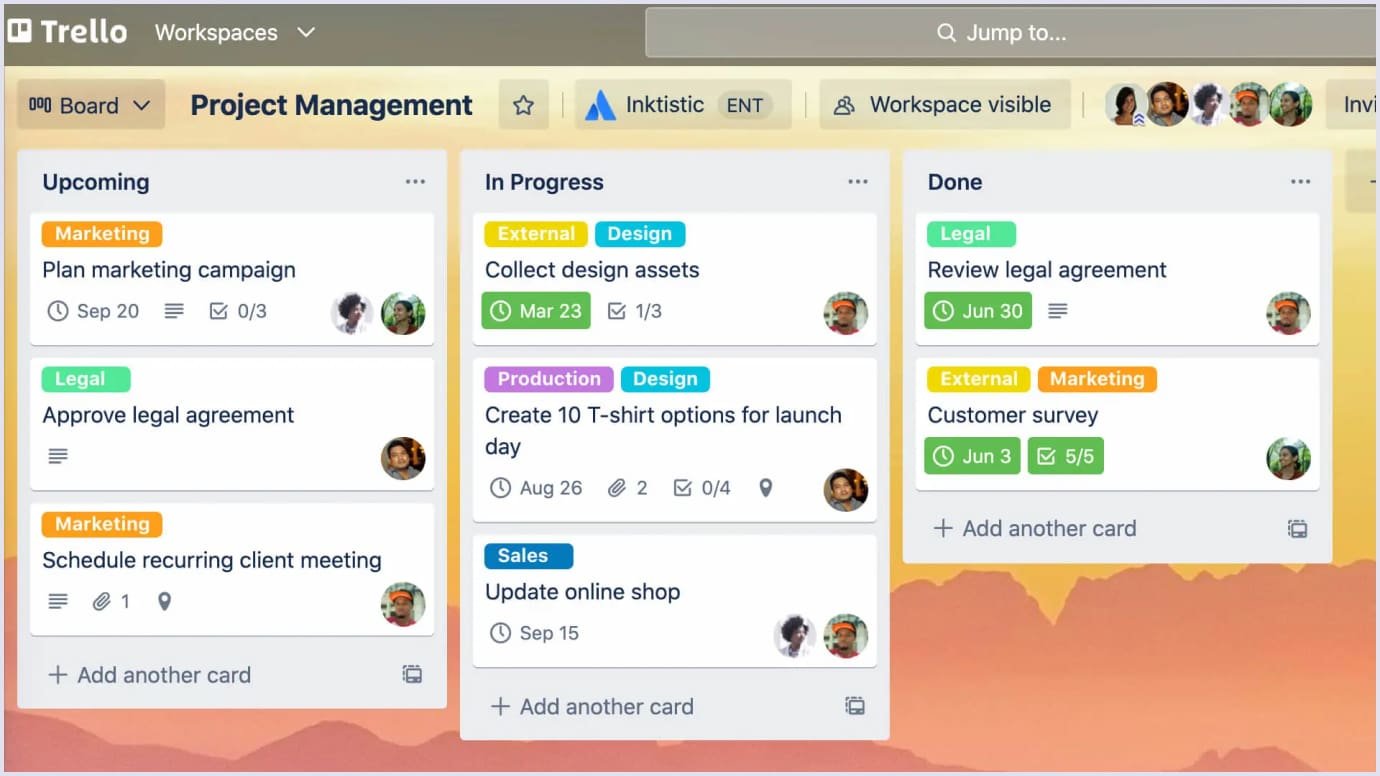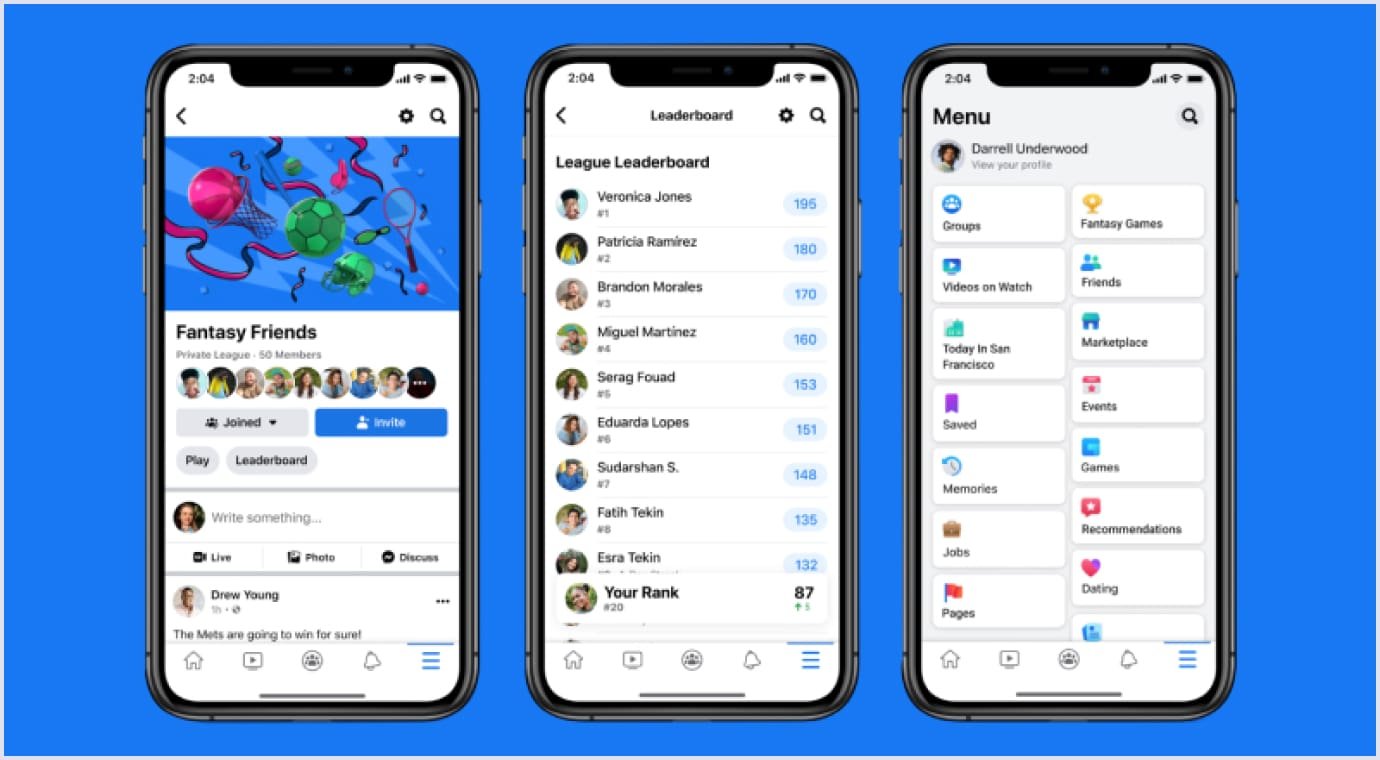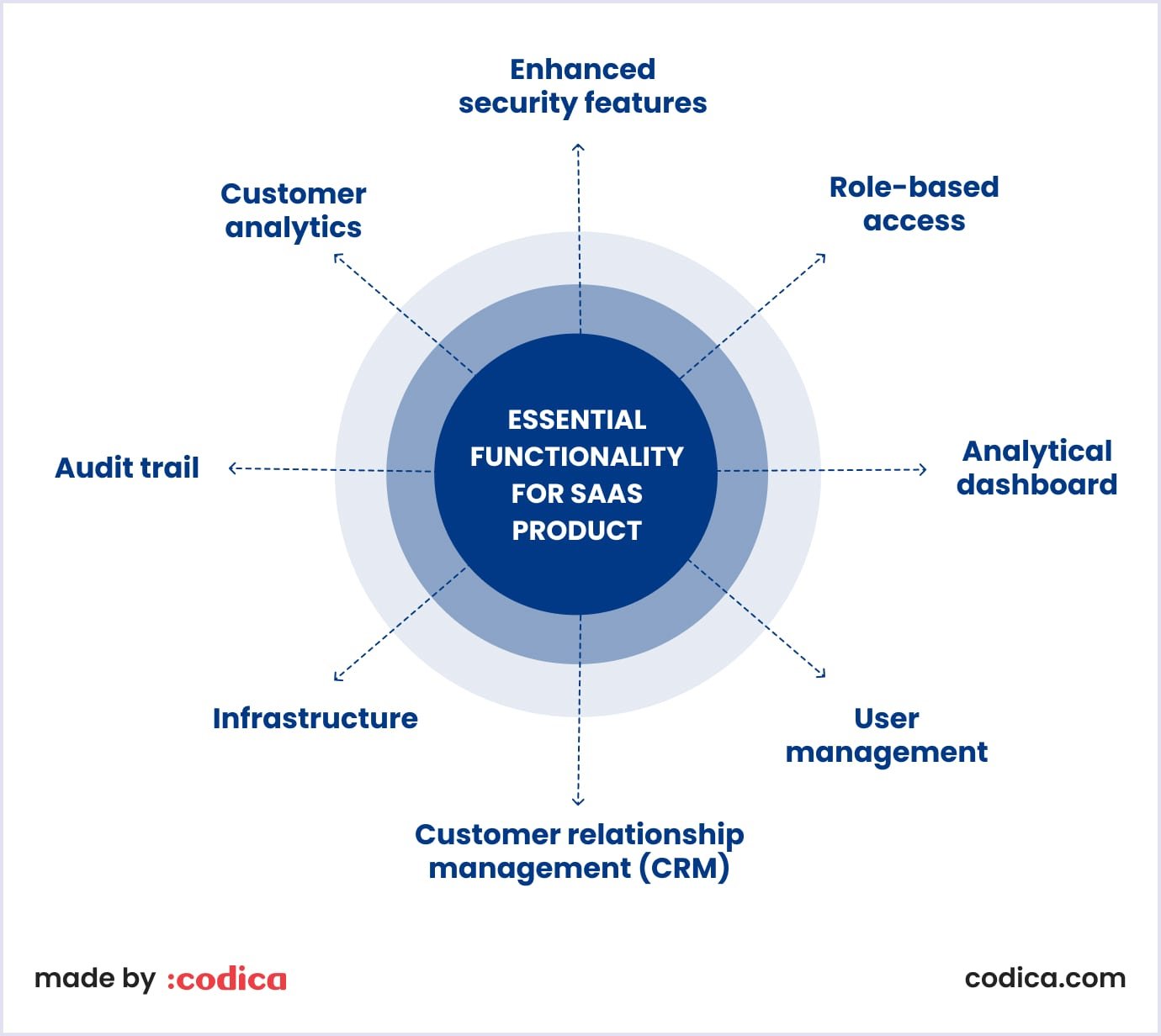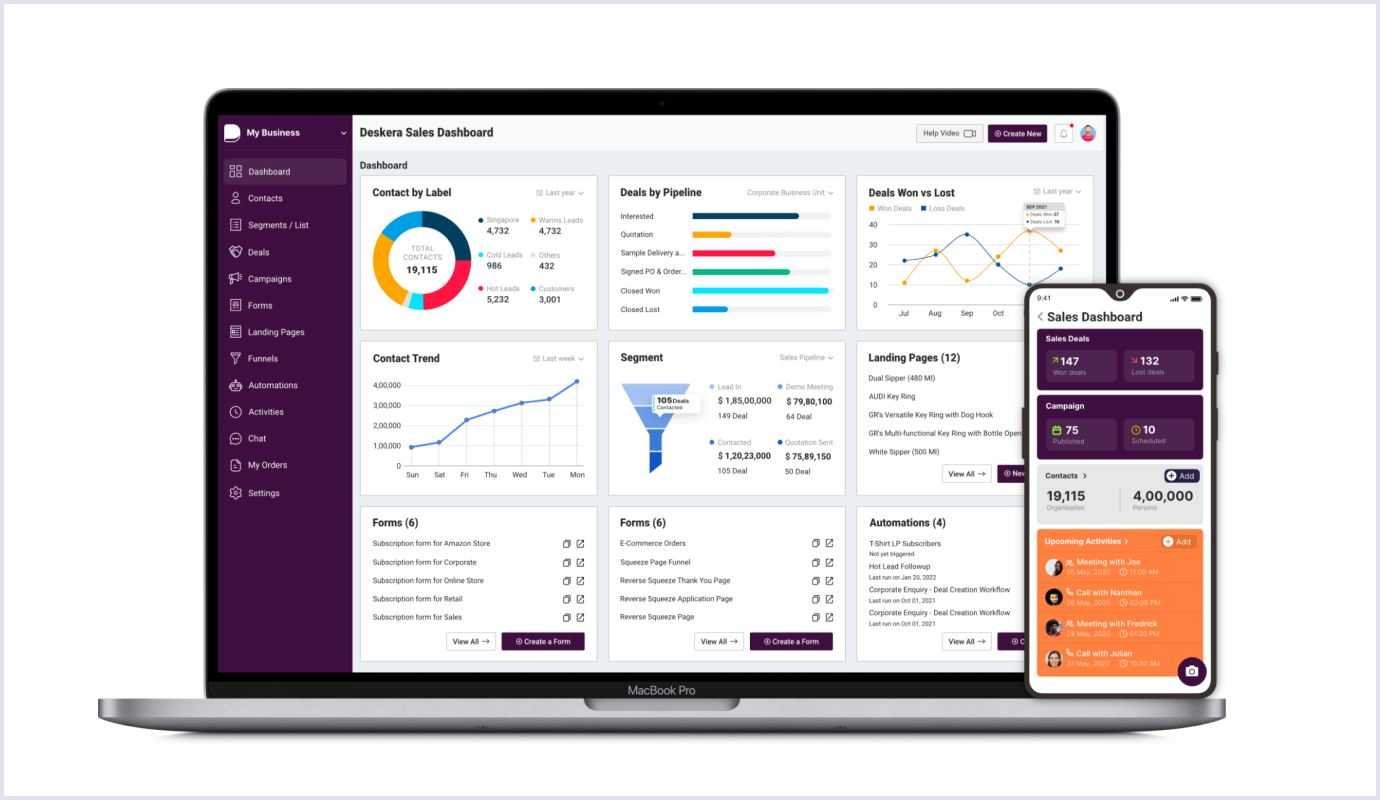How much will it cost to build a SaaS app? If you decide to follow the latest trends and invest in SaaS development, this question is relevant more than ever.
Based on our experience, we prepared this guide to help you understand what is included in a SaaS app price. Our experts cover in detail the main factors that define the final cost of building a SaaS product. They include the project scope and timeline, API integration, and the required functionality.
In this article, we go through different aspects of SaaS app cost and provide a summarizing table at the end for your convenience. Thus, you will be able to plan your budget. Let’s get started.
What does the cost of a SaaS product include?
To understand how the cost to build a SaaS app is calculated, let’s discuss a few key stages and aspects of the SaaS development process. Altogether, they form the product’s pricing, yet the final price may differ if you decide to avoid certain functionalities.
The scope of your SaaS project
To start with, decide what kind of SaaS product you are going to create. Will it be a dedicated SaaS platform or a tool? These kinds of software-as-a-service systems have different scopes, which means the cost to build a SaaS application will also be different. In general, SaaS tools have a narrow scope, aiming to tackle one or two issues, and are expected to perform only a few functions.
Depending on the scope of your SaaS product, you can count on the following startup costs for each type:
| SaaS development cost depending on the scope | ||
| SaaS type | Description | Development cost |
| Micro SaaS | Small scope, targeting a small problem in a niche market | $10,000-$25,000 |
| Basic SaaS | Includes a marketable feature set suitable for startups or small businesses | $30,000-$50,000 |
| Average SaaS | Mid-level SaaS apps with a moderate range of features and integrations | $50,000-$100,000 |
| Complex Saas | Feature-rich apps with advanced functionalities, integrations, and scalability requirements | $140,000-$150,000+ |
Let’s explore the scope and estimated costs of building a niche SaaS tool and a SaaS platform with rich functionality.
A classic instance of a SaaS tool targeting a specific niche is Trello. It is a project management solution built to handle tasks in the working environment. Overall, the tool is simple and intuitive, perfectly performing task management. A Trello-like clone cost starts from $40,000 with basic functionality and reaches $80,000 and beyond.

Source: Trello
SaaS platforms, in turn, often comprise several tools. Owing to this structure, their functionality is expanded greatly, influencing the cost of SaaS. Thus, users get access to features that are unavailable in similar SaaS instruments.
One of the top SaaS platform examples is Facebook. Needless to mention, how many features it has. Nowadays, it combines messaging, social media functions, and even a marketplace. A basic version of a similar solution starts from $50,000 and reaches $150,000 and more.

Source: Facebook
If you are new to the SaaS business and building your first SaaS product, you should keep it simple. Start with a tool and then scale it by adding new features. In this case, you will not have to worry that building a SaaS app will be too expensive.

The implemented functionality
After you’ve decided on the scope of the solution, it’s time to consider other aspects. SaaS development costs also depend on the complexity of your project. The more features your product has, the higher the price you will have to pay. For this reason, choose the required functions wisely.
Draw a clear line between must-have functionality and desirable but not essential features. This way, you can avoid overpaying for unnecessary options in SaaS application development. To make a choice, however, product discovery services would be of great help.
So, what features should your SaaS application have? The key functionality hinges on the particular issue it is designed to solve.
At the same time, the following features are common for all types of SaaS products:

- Role-based access. It enables admins to set different permissions within a team. For example, they can restrict the level of access to sensitive information for some members.
- Analytical dashboard. It allows users to see graphs, charts, and metrics. The dashboard also provides users with reports and shows real-time changes. When you have access to analytics, you can see which business metrics should be improved.
- User management. It encompasses log-in and log-out functionality, profile editing, and password management. You might also consider choosing a single sign-on. With this option, customers no longer need to log into every application they use. Instead, they apply single credentials to access multiple services.
- Customer relationship management (CRM). It helps organize communication with customers and prospects. CRM enables tracking sales and interactions, managing documents and quotes, etc. Salesforce is a prominent example of a CRM. Thanks to the tools and display of customer behavior, the service facilitates business marketing.
- Infrastructure. The number of users of your product varies as time goes by. So, your solution should be able to scale up and down depending on the loads.
- Audit trail. With this feature, you can track the activities of the account users. This way, it will help you prevent suspicious activity and spot vulnerabilities early on.
- Customer analytics. This feature enables you to analyze customer behavior. By analyzing the dynamics, you can optimize users’ experience in your SaaS solution.
- Enhanced security features. They protect sensitive information against the most common security vulnerabilities. It is particularly useful in a complex SaaS system that stores the sensitive data of all its users.
If your SaaS app solves a narrow problem, you only need the essential functionality. Expanding your solution requires more effort and, hence, additional SaaS software development costs.
Based on our experience, the price range is $2,000 - $4,800 per SaaS MVP feature.
API integration
Like any other app, your SaaS product needs backend functionality. The question is how it will be implemented in your SaaS product development. You can either build it from scratch or via API integrations.
While APIs can be costly to develop and use in the long run, they provide you with better flexibility. APIs help you scale your SaaS app and add or remove the necessary functionality. You can do it faster with APIs than with rebuilding the backend every time you need an update.
Below are the estimates for SaaS API integrations of different scales.
| Cost of API integration for SaaS | |||
| API integration scale | API scope | Ideal for | Cost per API |
| Simple | Connecting to a single API with basic functionality (e.g., payment gateways like Stripe or PayPal) | Small-scale SaaS projects or simple integrations | $1,000 – $5,000 |
| Moderate | Integration with APIs that require some customization or complex workflows (e.g., CRM systems like Salesforce, HubSpot) | SaaS platforms with mid-level requirements and third-party tool integrations | $5,000 – $15,000 |
| Complex | Extensive customization, advanced workflows, or real-time data syncing (e.g., enterprise-level systems like SAP or Oracle) | Large-scale SaaS platforms with enterprise clients or specialized integration | $15,000 – $50,000 |
If you use API, you can scale your business fast. Besides, it allows SaaS companies to skip many development steps they would have to follow if they developed the backend of their app from scratch. Thus, you reduce the SaaS app development cost in the long perspective.
In today’s highly competitive market, you need to think of better ways to use your budget than reinventing the architecture of existing SaaS solutions. It will reduce the cost of your SaaS app.
SaaS development target platform
There are two main types of SaaS development platforms: desktop and mobile. Mobile platforms are suitable for giving users enhanced accessibility and speed. For example, Mention and Buffer offer exceptional user experiences in their mobile versions.
On the other hand, for most business-to-business (B2B) solutions, a SaaS without emphasis on the mobile version is preferable, as employees work with desktop versions. For example, Dropbox and Slack allow easy handling of files in their desktop versions for businesses.
Building your product for both is favorable, but you must add it to your SaaS app development cost. Adapting a solution for mobile users can turn out to be very expensive. Therefore, creating a SaaS system for one platform is advisable, which you will expand in the future.
As exemplified in Deskera, both versions have pros and cons. The mobile SaaS system is helpful for quickly reviewing a short piece of information or sending a message. Meanwhile, users prefer a desktop version to view spreadsheets and more complicated documents.
That is why Deskera offers mobile devices and desktops with cloud-based business software.

Source: Deskera
SaaS development costs: step-by-step pricing
At Codica, we offer full-cycle development services. Below, we provide a brief description of each step in custom SaaS app development and estimated hours and costs for them.
Conducting a product discovery
Regarding this stage, you can count on 5%-12% of the SaaS development cost. Product discovery involves checking the feasibility of your idea and market research. We analyze your idea’s market fit, provide tech recommendations, and estimate the timeline and budget for your project. The discovery ensures the right start for your SaaS app development.
Timeline and cost: 70 - 160 hours, $3,350 - $8,000
Check out the video below for a concise overview of how product discovery goes in Codica.
UX/UI design services and prototyping
At this step, our design team creates layouts for your solution. It’s vital to consider the discovery answers in UI/UX design services to choose the right flow and palette for the SaaS app. The SaaS design should include intuitive UX and attractive UI. It should clearly show your users the key purpose of your solution.
Timeline and cost: 120 - 170 hours, $6,000 - $8,500
Minimum viable product development
Creating a solution as a minimum viable product includes the core value for your customers. It allows you to test your SaaS system with early users and discover if it is profitable. Since your SaaS product MVP includes only the key features, you’ll need less time and cost to build it.
At Codica, we recommend starting with minimum viable product development to test your solution with basic features. Our estimates for a SaaS MVP start from $50,000 - $60,000 and beyond if you want to scale and add advanced features.
The aspects typically involved in SaaS MVP development include frontend and backend development, database management, and hosting handling.
| SaaS MVP development components | Time, hours | Cost |
| Frontend | ||
| Simple | 200 | $10,000 |
| Medium | 350 | $17,500 |
| Advanced | 450 | $22,500 |
| Backend | ||
| Simple | 300 | $15,000 |
| Medium | 500 | $25,000 |
| Advanced | 650 | $32,500 |
| Additional costs | ||
| Database management | Monthly | $20 - $200 |
| Servers and hosting | Annually | $1,500 - $4,500 |
Timeline and cost: 500 - 1,100 hours, $25,000 - $55,000
Scaling your SaaS to a fully-fledged product
Evolving your MVP into a top-notch product is impossible without the use of proven technologies. A company with reliable expertise chooses such tools to deliver robust and secure SaaS products.
Timeline and cost: 700 - 1,500 hours, $35,000 - $75,000, and beyond
Quality assurance
Testing helps refine the code and avoid errors, ensuring proper work is done for your solution. Quality assurance services allow testing of the critical aspects during SaaS application development. They include performance, user experience, compatibility, and security.
Timeline and cost: 150 - 200 hours, $7,500 - $10,000
Maintenance and support
After your SaaS app is deployed, the developer will support you as your product changes. This involves updating without downtime to streamline the user experience. Shortly after launch, you’ll need to make improvements frequently and check them based on customers’ feedback. So, there should be a developer team to support you.
Timeline and cost: ongoing, $2,000 - $5,000 per month
At Codica, we are sure all these stages are vital for building a successful product. Our team develops SaaS applications with backup and recovery strategies in mind. This ensures the required level of usability and security.
Overhead costs
It would be a great mistake to think that all your expenses will be over after the launch of your SaaS application. There are different overhead costs for a SaaS release you need to consider.
First off, you need to figure out how to attract users to your application. That means significant spending on promotional strategies and marketing, which raises the cost of SaaS.
Besides, do not forget about legal costs. These include compliance with federal and local legislation. This is particularly important if you build a SaaS application for strictly regulated industries like healthcare or finance.
Speaking about the total cost of ownership, we should mention the following expenses:
- Licensing: $1,500 - $3,000;
- Cloud services for running your SaaS app: starting from free, typically $5 - $20 per month, and more;
- Maintenance and updates: $2,000 - $5,000 per month;
- Technical support/training: $300 - $2,000 per month.
All these also add up to the cost of building a SaaS product.
Choosing a development team
If you don't have an in-house development team and need to hire the right specialists for your SaaS product, you have two options: turn to a team of freelancers or partner with a SaaS app development company. Each variant has peculiarities that can influence the cost of building a SaaS app.
Finding a freelance team
Hiring freelancers will cost less than partnering with software companies. The price gap is explained by the fact that self-employed professionals usually set lower rates, which could reduce SaaS software development costs. On the other hand, the quality of services they provide may differ from one to another, as the skill range can be huge. Therefore, you risk getting a low-grade product.
At the same time, end-to-end SaaS companies cherish their business reputation. Therefore, they emphasize quality over everything, delivering robust and performant products.
Partnering with a software development agency
However, a partnership with a software development agency will raise the cost of SaaS. Although it is usually worth the effort and cost, be careful when making a choice. Make sure your partner has experience in the niche, has previously built similar products, and has a professional development and project management team behind it.
When it comes to exact rates, everything depends on the location and experience of a development team. For clarity, below are the average hourly rates of software developers in different geographic regions. The stats cover the US and Canada, Western and Eastern Europe.
| Average web developer hourly rates | |
| North America | Western and Eastern Europe |
| $41-$100, reaching $160 per hour | $41-$80, reaching $81-$160 per hour |
Our team provides the necessary services to deliver your product based on your requirements and business needs. For example, we implemented blockchain technology in an insurance platform. This approach secures the users’ personal and e-wallet data.
How much does it cost to build a SaaS product?
SaaS apps differ by goals, scope, and functionality. As the cost of building a SaaS depends on many parameters and variations, estimating a unified relevant price is challenging. SaaS software development costs vary widely depending on the scope and your business goals.
So, before you invest your time and money, it’s important to know what budget you might need for a SaaS MVP, at least approximately.
Below, we’ve prepared a table with estimated prices per SaaS MVP development step and feature. The estimated total cost is $67,000.
| SaaS product development cost | ||
| Features | Time, hours | Cost, $50/hour |
| Design | ||
| UX development | 64 | $3,200 |
| UI development | 96 | $4,800 |
| Architecture | ||
| Project setup | 24 | $1,200 |
| DB structure | 32 | $1,600 |
| Integrations | ||
| Payment (Stripe or PayPal) | 64 | $3,200 |
| Main functionality | ||
| Authorization and security | 64 | $3,200 |
| User profiles | 40 | $2,000 |
| Homepage | 56 | $2,800 |
| Search and filters | 72 | $3,600 |
| Reviews and ratings | 48 | $2,400 |
| Payout | 40 | $2,000 |
| Notifications | 48 | $2,400 |
| Messenger | 64 | $3,200 |
| Managing listings | 64 | $3,200 |
| Booking system | 64 | $3,200 |
| Property page | 72 | $3,600 |
| Admin panel | 96 | $4,800 |
| User panel | 84 | $4,200 |
| Non-development activity | ||
| Project management | 96 | $4,800 |
| Quality assurance | 104 | $5,200 |
| Code review | 48 | $2,400 |
| Total | 1340 | $67,000 |
Please note that the above costs are mentioned for reference. Only your development partner will be able to provide you with the final estimate.

How can Codica help you build a SaaS app?
Our in-house expertise allowed us to create successful SaaS products for a number of domains, including finance, travel, automotive, and insurance. Our experience allows us to reduce the total cost of building a SaaS app and helps you save time and budget.
Do you need a custom software-as-a-service solution? Our professional team will build a SaaS product for you from scratch. It will take into account all your specific SaaS business requirements and needs.
As mentioned, the Codica team has a long history of building custom software products, including SaaS. One notable example of SaaS products we built was CakerHQ. It is a SaaS-based platform for cake makers.

It aims to facilitate interactions between customers and cake makers, making the order and purchase process easier. Therefore, CakerHQ provides a dedicated platform where people can connect all over Australia.
The SaaS platform offers a convenient search system so that customers can find the perfect cake for their celebration. To make it even more reliable, we implemented a secure payment system, handy planning functionality, and Google Maps integration.
Conclusion
So, how much will it cost to build a SaaS app? As you can see, there is no unified answer to this question. Every SaaS app project is unique, and so is the development cost.
We have covered the main aspects of SaaS development that influence the total price of a SaaS product. Nonetheless, as you have seen from the table, there are many aspects that can change and, therefore, alter the final price.
Contact us if you are looking for a reliable SaaS app development company to help you create a secure, scalable, and reliable cloud solution. We will happily take on your project and help your business grow.

